Two Kinds of People
I have a murky and confusing ethnic background. I was raised by folks of English and Scottish heritage, but they were not my biological parents. My biological parents are first generation Irish on one side and a mix of English, First Nations Canadian and probably some French, on the other.
My paternal great-great-grandfather (1768-1833) was a master shipbuilder named James Day, born at Shorwell on the Isle of Wight, who arrived in Paspébiac, Gaspé in 1795. After that the line gets a bit muddled, and there is some confusion about how much Native blood is in the family. The Gaspé is Mi’gmaq country, and so it would be normal for there to have been some intermarrying. Most French people whose families are long-time residents of Quebec can, I suspect, claim at least a wee bit of First Nations blood. My grandmother told me that my grandfather, who never married her, was a Mohawk from Akwesasne, but apparently she told my father something else.
So, what’s the point? I’m a wee bit of lots of things, as we all are. Even Tiger Woods. Even the President-Elect.
I suspect this makes some folks uncomfortable. I recall, in the security hysteria of post-911, how the Canadian government suddenly decided that my Quebec baptismal certificate, which is what the government had always recognized as my official “birth certificate,” was no longer good enough. I was living in France at the time and trying to get my passport renewed. The stern lady at the Canadian Embassy in Paris said I had to have a birth certificate before she could initiate the paperwork.
“But I’m adopted,” I said. “I don’t have a birth certificate. I have an adoption certificate, if you’d like that.”
“Not good enough,” she said.
“So what would you propose I do, since you cannot simply produce a birth certificate naming my birth parents?”
“No problem,” she said cheerfully, “we’ll just get you a new birth certificate with the names of your adoptive parents on it.”
“But they didn’t give birth to me. I am not, genetically and ethnically, of their bloodlines.”
Apparently that didn’t matter. What mattered was acceptable paperwork, and so, just like that, all my ethnic background was rearranged. I became, legally, of English and Scottish heritage.
Huh. I remember thinking at the time that some bureaucrat hadn’t thought this through. It might work to tidy up the documents going through post-911 security, but how do you explain full-blood Korean kids, for example, “born” to genetically Finnish families, or those Cree kids, who would lose their Native rights? Phooey.
We are all, in one way attached to our heritages, it roots us. Grounds us. As an Objiway elder I once knew said, “We want our kids to marry within the community, because if they bring home somebody from outside, we don’t know their stories.” By this she meant that prospective in-laws don’t know who they really are, and she also means that the prospective bride or groom might not know who they are either. It isn’t that anyone’s looking for royal blood, or evidence of heroic derring-do so much as they want you to know your families stories, complete with horse-thieves as well as heroes, for they understand that to know the stories of your ancestors is to know your place in the world. To know that you have some talents and you have some frailties, and what they are.
In my case, it was interesting to discover that I’m not the first writer in the family, but on the Irish side (no surprise) apparently that talent had popped up in previous generations. It was also important to note that alcoholism and depression has run a galloping race down through the generations. On both sides of the family tree were sea-farers as well, and on both sides there were island dwellers, people most at home with the vast landscape of sky and water, as I am. I’ve heard stories of poverty and cruelty and neglect, as well as enormous compassion and kindness. I take it all in, see how it’s filtered down, both good and bad, into who I am, and when all is said and done, I know myself better because I know the stories of my past. I accept myself more fully, warts and all.
Accepting myself, in fact, was key to dealing with some of those warts – like addiction and depression, for example, and a rather selfish tendency to run after the next bright shiny thing, rather than accepting the beauty, enhanced by the signs of wear, in the long-familiar. I had to face that that these little pain-producing nodules were a part of who I am, and I had to learn not to be afraid of them, or deny them, but to de-fang them by acknowledging them and not letting them hide in the dark corners, where they tended to pop out at most inconvenient moments.
I consider myself remarkably lucky, especially since I’ve met any number of folks who don’t seem able, yet, to accept all of themselves. I had a friend, I’ll call him Joe. Joe is terribly well educated and well traveled. He comes from a well-to-do family with every privilege. One day we sat together in a Paris café and he said to me, “You know what the trouble with white people is?”
“Okay, tell me?” I said, eagerly leaning forward, since I assumed a witty punch-line would follow, sort of like that Jackie Mason joke about the difference between Jews and gentiles being that gentiles leave and never say good-bye and Jews say good-bye and never leave. (After standing around outside countless restaurants with my in-laws in the freezing cold while they hav
e the conversation-after-the-conversation for another half hour or so, I find that hilarious.)
“It’s because you’re descended from albinos.”
“And?” I still thought there was a joke in there somewhere, but, alas, there wasn’t. Joe went on a rather rambling explanation about genetically-defective albinos born in Africa who were tossed out of the tribe because they were clearly evil and how they migrated north to present-day Scandinavia, where they formed new tribes who were always trying to get back into the original family and were so angry about it all they even resorted to slavery and genocide, which no melanin-healthy (read dark-skin) person had ever done. Hence, the more melanin, the more morality.
Really?
So where’s the punch line?
None, apparently. The albino theory of immorality is one put forth by Dr. Frances Cress Welsing, a psychiatrist practicing in Washington, D.C. She is famous for her “Cress Theory of Color Confrontation”, which explores the practice of white supremacy and she is the author of The Isis Papers; The Keys to the Colors (1991). Google it if you like. It’s quite astonishing how many people take it seriously. But then, some folks believe Noah actually had all those animals on the ark, too, apparently with no lunch-room disputes, so go figure.
Noah’s ark. That nice plump sheep seems to have caught the lion’s eye, don’t you think?
Sadly, Albinos in modern-day Africa live in terror, since they are being hacked to death with alarming frequency. Apparently shamans tell certain folks that albinos, far from being the pariahs of Dr. Welsing’s thesis, are lucky (you can see the irony) and therefore valuable for the magical properties of their skin, tongues, genitals and limbs and encourage their ‘harvest.” President Kikwete of Tanzania recently summed up the grave situation: “These killings are shameful and distressing to our society, I am told that people kill albinos and chop their body parts, including fingers, believing they can get rich.” So much for that morality-melanin connection.
Now, I understand why my friend Joe might feel the way he does. Regardless of the privileges he’s had in life, he’s also had some dreadful experiences with white people behaving like vile idiots toward him, including a particularly scarring incident when he was wrongfully accused of shoplifting in a big department store and chained to a chair by his ankle. Shudder.
Still, I can’t help but feel his insistence on denying any possibility that he, too, in some other situation, might behave with equal cruelty. And of course, one only has to look at dear Joe to know that some ‘blood of the oppressor’ runs though his veins, mingled with the blood of African ancestors. But he’s been hurt, anyone can see that, and it’s too hard from him to think he could be anything like the people who hurt him, and so he finds a theory that confirms his hope that he is normal and good, and the Other is aberrant, a moral mutation.
On another tack, I know someone who refuses to believe that Israel is anything but a kind and just nation surrounded by a lot of really bad, morally inferior murderous Arabs who aren’t grateful for the nice ‘suburbs’ they live in. Now, there was a book written by Edeet Ravel a couple of years back, called “Ten Thousand Lovers.” Ms. Ravel is a Canadian-Israeli writer who was born in 1955 in Sasa, an Israeli kibbutz near the Lebanese border. Her family relocated to Montreal, Quebec, Canada when she was seven. At age 18 she returned to Israel to attend Hebrew University, where she received a B.A. and M.A. in English Literature. She returned to Montreal to complete an M.A. and Ph.D in Jewish Studies at McGill and a Masters in Creative Writing at Concordia. In her award-winning book, Ms. Ravel explores the relationship between a young woman very much like herself and an Israeli interrogator. When the interrogator reveals some of the horrors committed by Israelis the young woman cries out in protest – how can this be true? If it were true surely we would have heard about it? The interrogator replies that we DO know about it, it’s in the papers every day, but no one will accept it, will admit it, because to do so would mean that Jews are not who they historically think of themselves as being – noble, gentle, wise, oppressed, compassionate, etc. If they accepted they are capable of the same atrocities as those perpetrated against them, then how are they different than those who oppressed them? Impossible to fathom. Entirely too agonizing.
I’ve seen the same thing in First Nations communities, the same thing in British tea-rooms, the same thing in French cafes, and certainly the same thing in Canadian and American living rooms.
We are the good people. We are not capable of those sorts of things. The people who do such things are not like us – not at all – they are completely Other. Demons. Monsters.
I have thought about this a long time, about how heartbreaking it is to see ourselves at last as not merely victims, not merely noble folks with pure intentions, but rather as people who are partly noble, pure and good, but also people just like everyone else, regardless of skin color or religion or nationality, capable of the most heinous, most appalling acts. We are the war-lords in Darfur, the Nazis in the Auschwitz, we are the boot at the door, the club on the back of the head, the fire on the rooftops, the sad little woman with a cigarette in her mouth, laughing, pointing at a group of naked, hooded men.
It’s heartbreaking, yes, but it’s also necessary, crucial in fact, that we understand our own shadow-side as Carl Jung called it, for unless we do so, unless we say that the oppressor and the oppressed, the torturer and the tortured are of the same marrow, we will always, I fear, turn away and turn a blind eye to the horrors around us, because we refuse to believe ourselves, OUR good selves, capable of such things. We can’t stop what we don’t acknowledge. And really folks, we can’t afford to do that. In the name of God, we really can’t. Robert Benchley had a great quote, he said, “There are only two kinds of people in the world: those who believe there are two kinds of people in the world, and those who don’t.” Which one are you?
There was an important article by Avrum Rosenseweig, in the December 11, 2008 issue of the Israeli newspaper Ha’aartz, entitled, The Jewish People is becoming its own enemy. Avrum is, in my opinion, doing the work of saints. He is the founding director of Ve’ahavta: The Canadian Jewish Humanitarian & Relief Committee – Canada’s only organization of its kind. He is also a weekly contributor to the Canadian Jewish News and has hosted radio and television shows since the mid nineties. I urge you all to read this courageous piece, and to consider that by denying our own shadow-filled psychic caverns we run a greater risk of being consumed by them. In short, we run the risk of becoming the very thing we most loathe and fear.
Jew, gentile, black, white, Aboriginal, Asian, male, female, gay, straight — no label exempts us. As Pogo (that sage cartoon character) once said, “We have met the enemy and he is us.”
Let us start there.
Copyright 2008 Lauren B. Davis For permissions: laurenbdavis.iCopyright.com
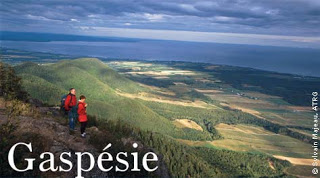
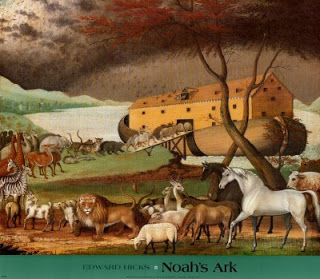
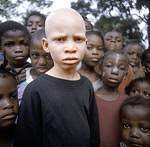

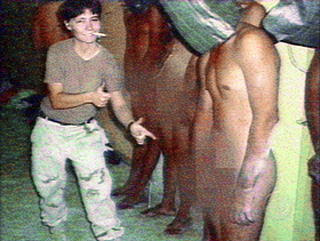
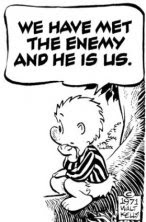
My 5th GG was also James Day. I realize you posted this in 2008 and may have figured out the descendants by now but if not, I’ve got it all.
Jason Winton
Hi Jason — well, I haven’t figured out much, since there’s a big gap when it comes to my paternal grandfather. He never married my grandmother, and there are various rumors about what happened and who he was. But James Day was an ancestor of my paternal grandmother, so that line’s fairly clear. Feel free to send me anything you think pertinent. You can do so through the contact page on this site. Thanks, cuz. 😉